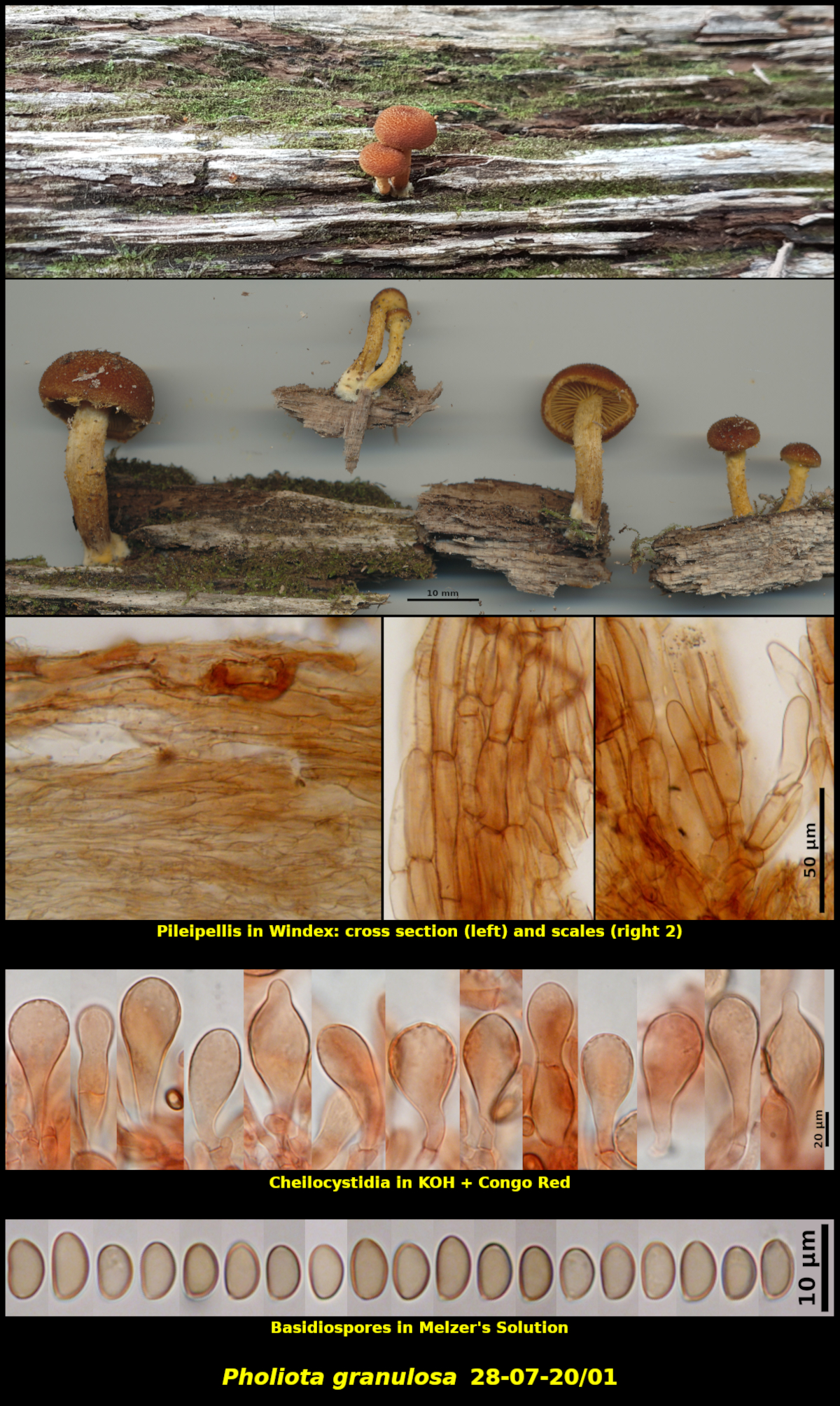Fleshy Fungi of New Brunswick >>
Pholiota granulosa
Pholiota granulosa (Peck) A.H. Sm. & Hesler

Gregarious (many) on a rotten hardwood log in an annually flooded area dominated by Acer rubrum, Fraxinus sp., Abies balsamea and Picea rubens, Wilson Brook Protected Natural Area, New Brunswick (28-07-20/01).
Pileus convex to hemispherical when young, remaining so at maturity, rounded or very slightly depressed on the disc, dry, densely covered with conical dark red brown (HSV10:50:40-50) scales, with scales characterizing the colour of the pileus, 12-15 mm in diameter. Stipe equal or tapering up slightly, orange yellow (HSV50:05-10:100), densely scaly, dry, 23-25 X 2-5 mm. Lamellae orange yellow (HSV50:05-10:100), close, adnexed to adnate, not marginate when fresh but having a white margin when dry. Partial veil abundant, cortina-like, bright orange yellow (HSV50:20:100), with remants remaining at the margin of the pileus and as a covering on the stipe. Flesh concolorous with the surface tissues, with a nondescript mushroom odour and taste.
Basidiospores orange brown in spore print, ellipsoidal to slightly phasaeoliform, occasionally flattened slightly dorsi-ventrally, possibly with a small but obscure germ pore, not markedly dextrinoid, 6.0-7.8 x 3.9-4.9 μm, Q = 1.49-1.84 (average[42]: 6.7 x 4.2 μm, Q = 1.61). Cheilocystidia forming a continuous sterile margin, mostly clavate but occasionally ventricose to sublageniform, appearing slightly rugulose above, with a basal clamp connection, 19-40 x7.9-15.9 μm. Pleurocystidia lacking. Basidia clavate, 4-spored, with a basal clamp connection. Pileipellis a dry cutis of brown cylindrical encrusted hyphae up to 14 µm in diameter, recurving to form the scales.Pholiota granulosa is a small mushroom growing on dead hardwoods. It is recognized by its squarrose-scaly pileus, yellow lamella and bright yellow partial veil that forms a distinct cortina and continues down the lower part of the stipe. Microscopically is is characterized by its cylindrical encrusted brown hyphae in the pileal scales and by its short but strongly clavate cheilocystidia. As Smith and Hesler (The North American Species of Pholiota, Hafner Publ. Co., NY. 1968) pointed out, the basidiospores may be slightly flattened dorsi-ventrally. It is quite similar to Phaeomarasmius erinaceella but differs in the well-developed yellow cortina and shorter subglobose to clavate cheilocystidia.
Photograph: D. Malloch (28-07-20/01).